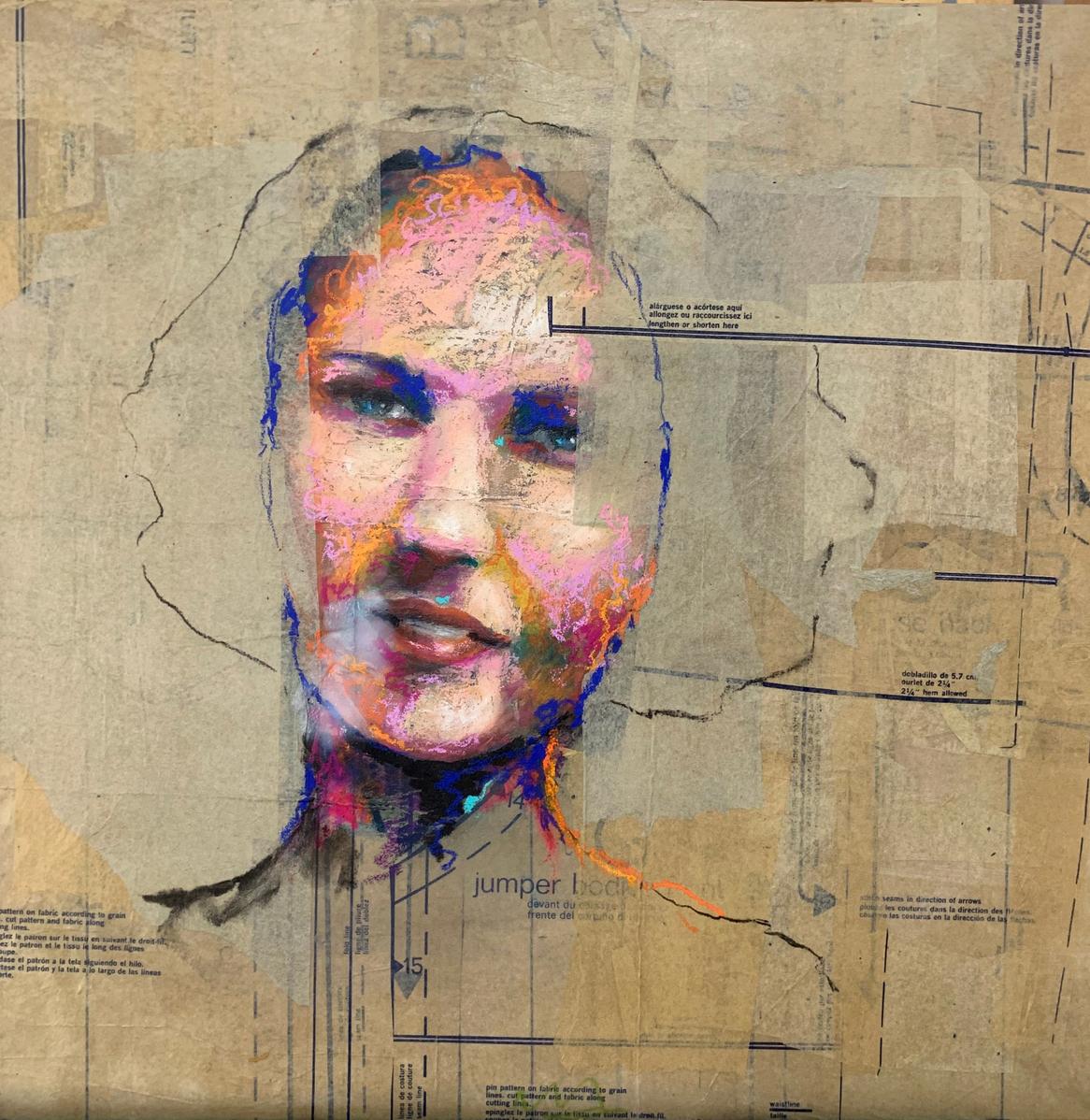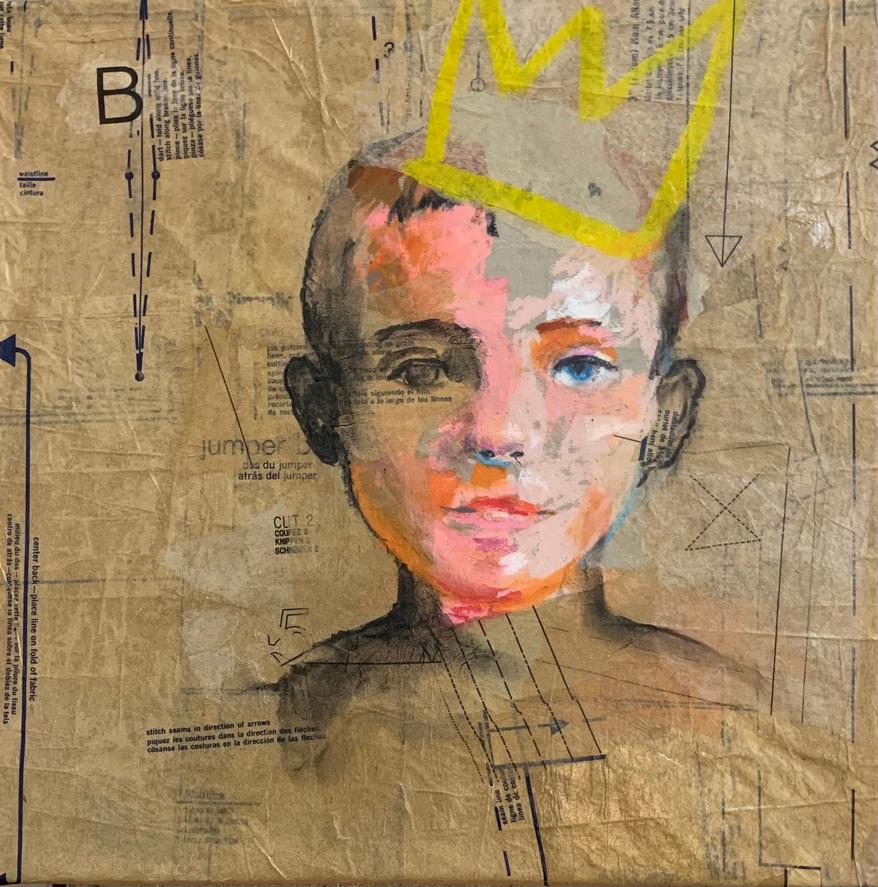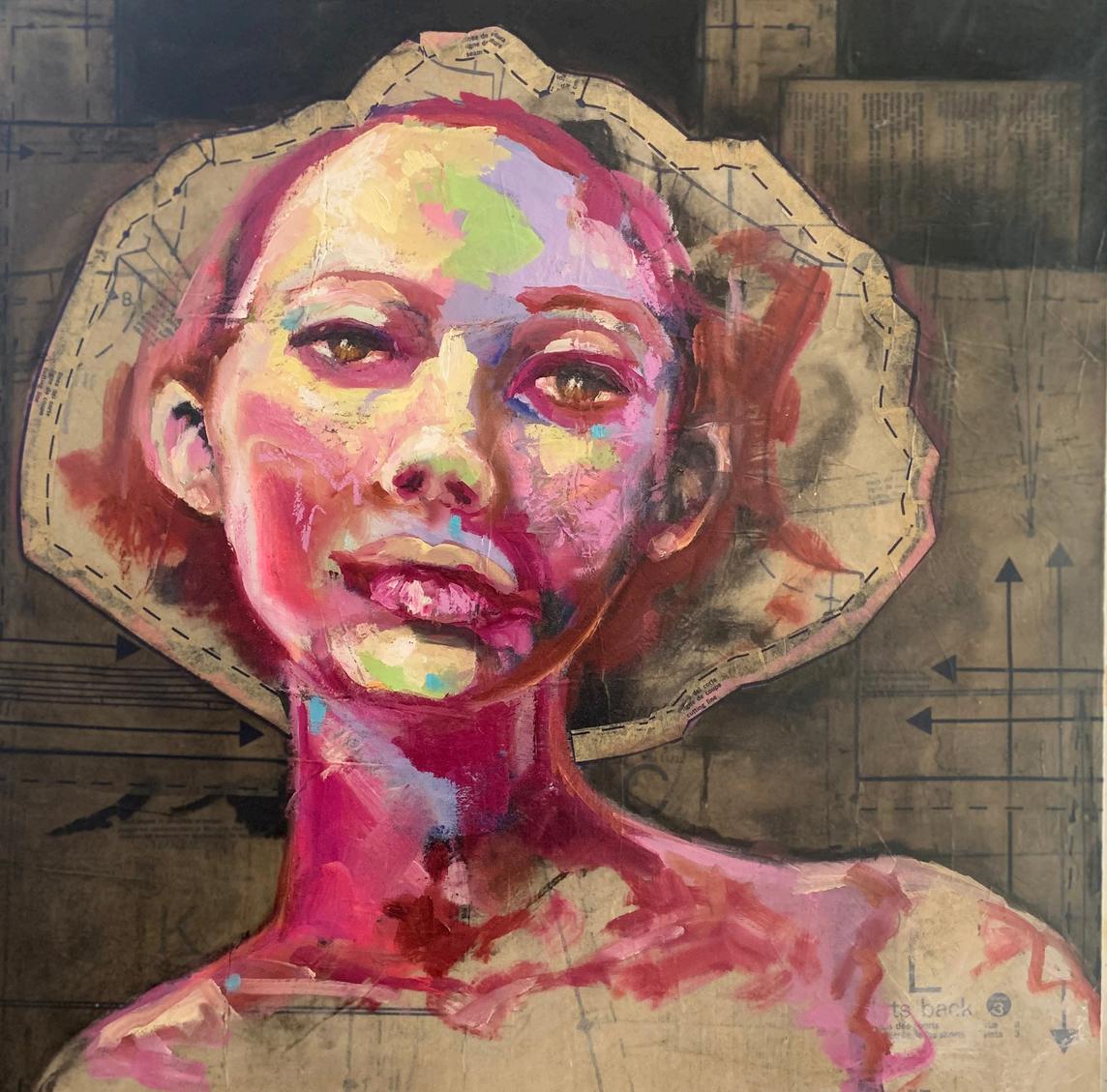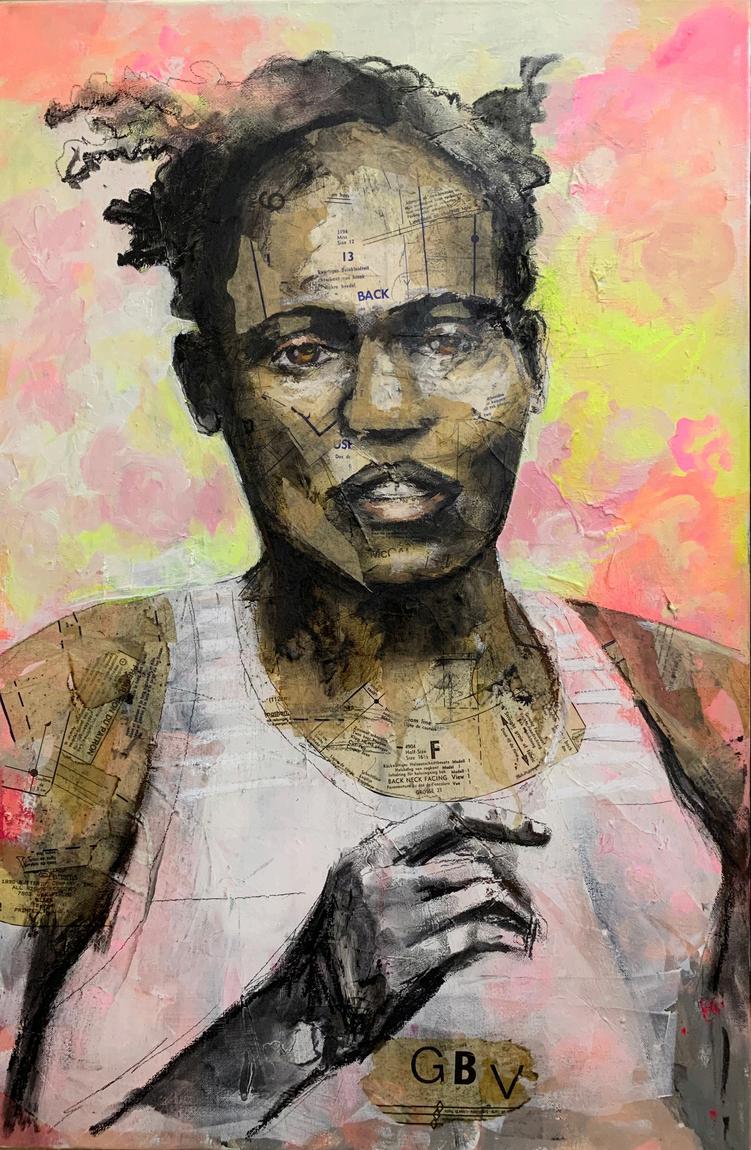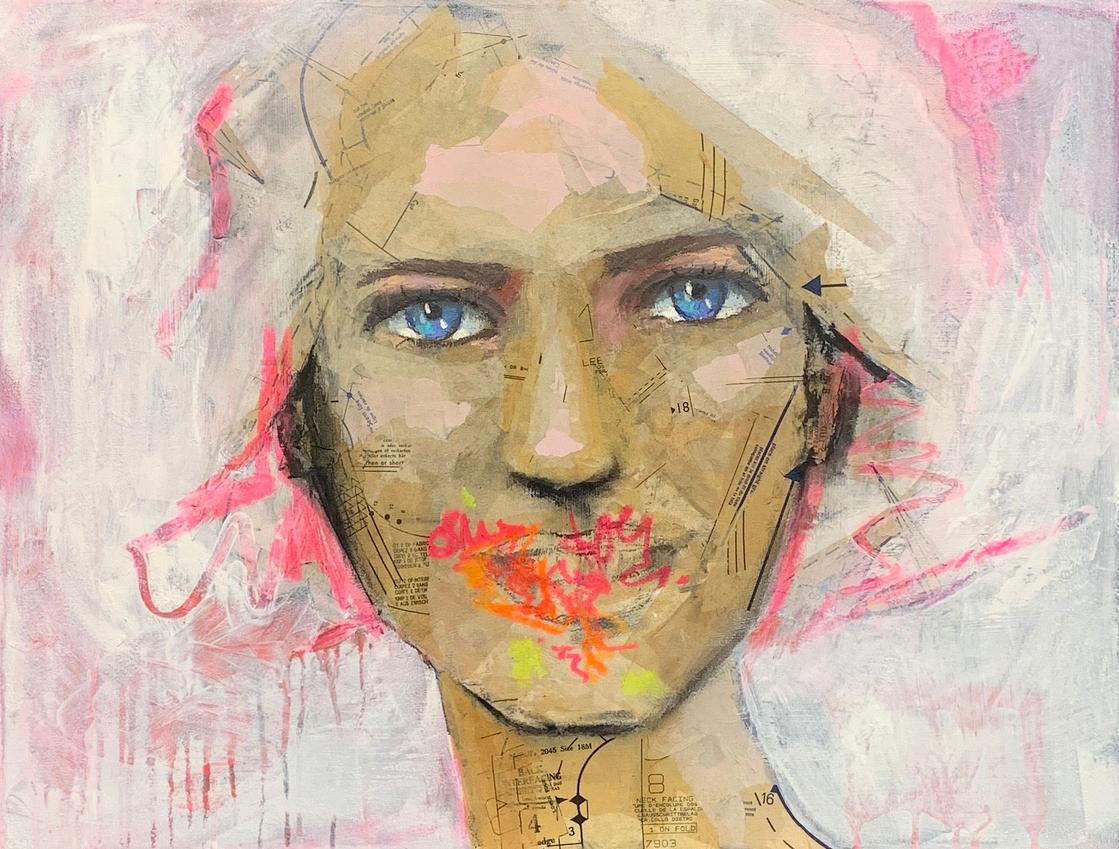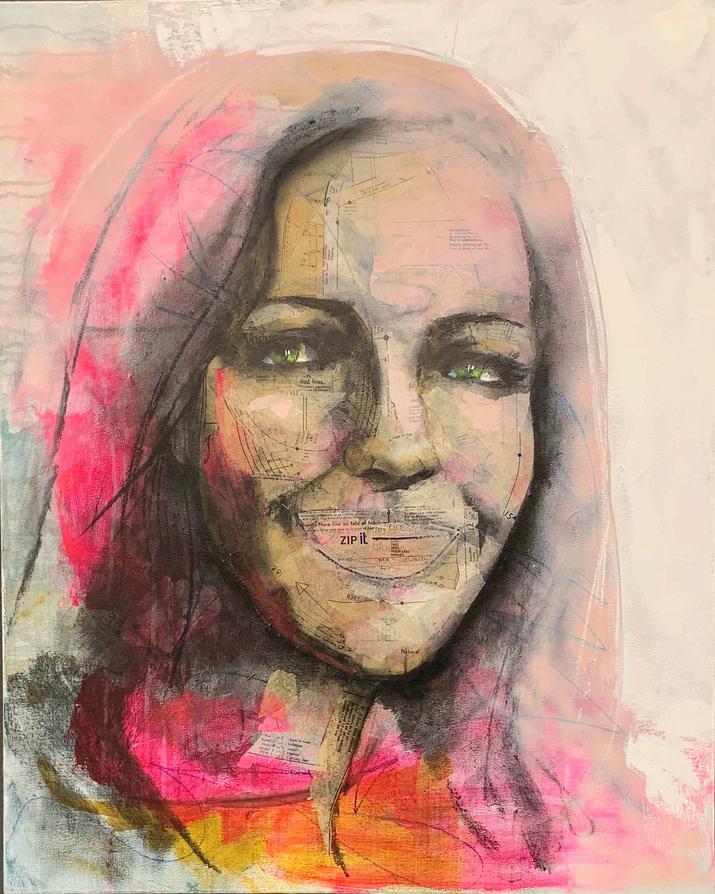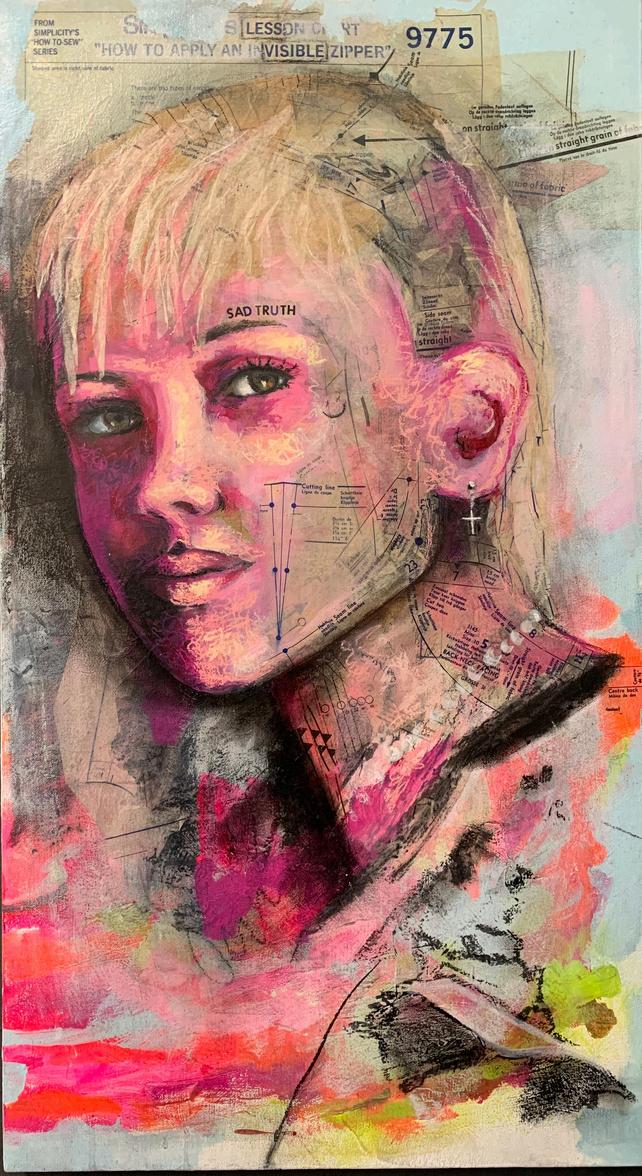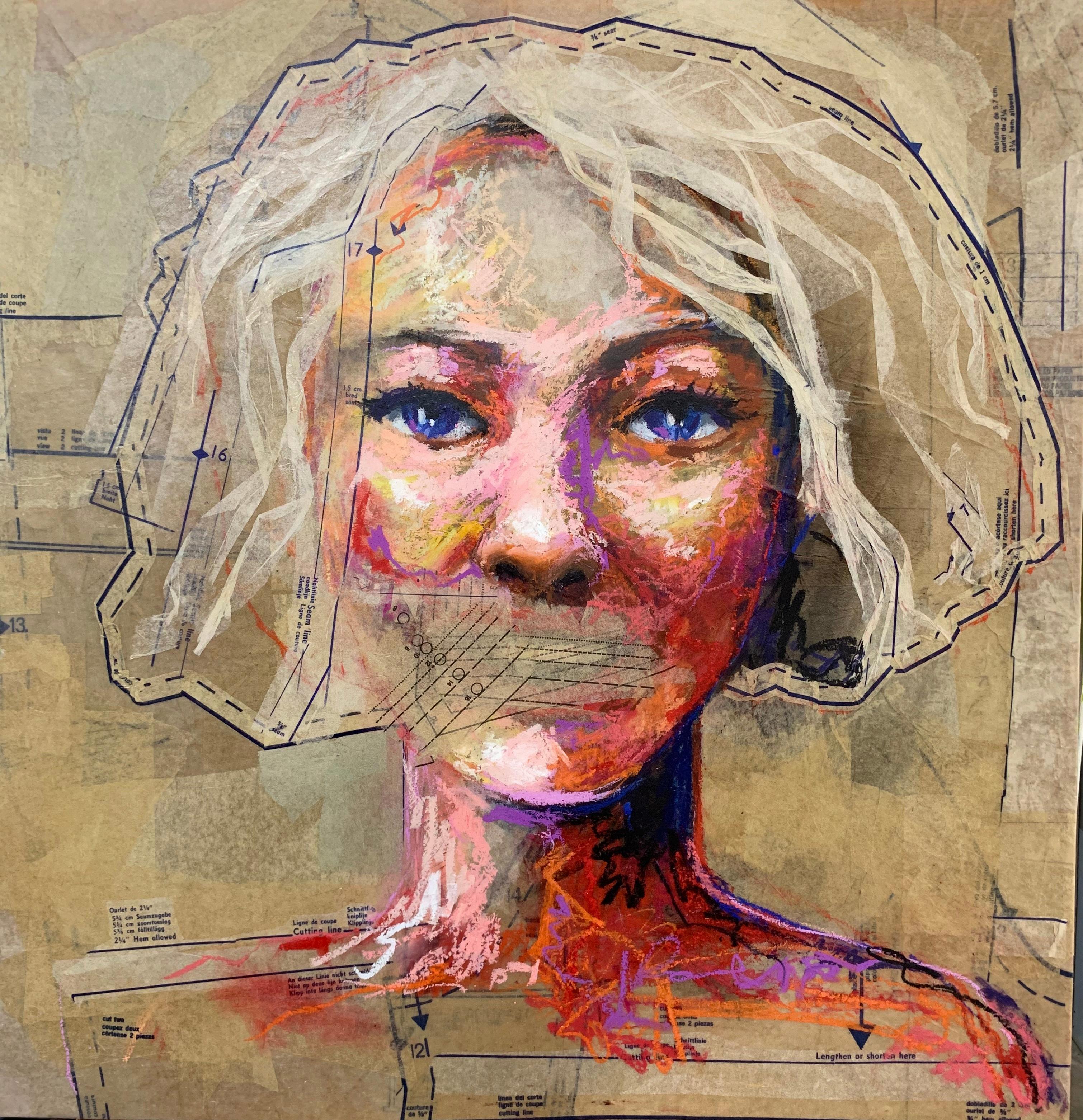Esmelinda Visser
Front Cover: Esmelinda Visser, Just be beautiful and shut up, 2024
Figure 1: Esmelinda Visser, Boardroom Angel, 2024
Figure 2: Esmelinda Visser, Cyborg, 2024
DerivedfromtheGreekwordpatriarkhes,PATRIARCHYmeans“ruleofthefathers” (Omvedt2012)……
Morethanjusttradition,patriarchyisaninvisiblepowerhierarchythatdictateshowmen andwomenshouldbehavebyplacingsomemenoverothersandallmenoverwomen. Feministthinkerslikebellhookshaveshownhowwhitewomenareoftenvaluedmorethan blackwomeninpatriarchalsystems(Hooks2015).
Patriarchyharmsbothgenders JudyChu(Chu&Gillian2014)observedthatboysfromthe ageoffivetoseven,learntohideemotionstofitin,whilegirls,uponreachingadolescence, arepressuredtoremainsilent.Bothgendersfearrejectioniftheydonotconform,leading mentodisconnectemotionallyandwomentosuppresstheirvoices(Gillian&Snider2018).
JohnBowlby’s(Gillian&Snider2018)researchsuggeststhatthesereactionsmirrorthe expectationsofan“honourableman”anda“goodwoman”underpatriarchy.
PsychologistTracySidesinger1 (2017)notesthatdespiteprogresstowardequality,lingering unconsciousideasaboutgendercontinuetoupholdahierarchythatplacesmasculine abovefeminine,straightabovegayandmenabovewomen(Sidesinger2017).
Politicalfiguresexemplifythepersistenceofpatriarchy.DonaldTrumpandJacobhaveused powertosilencewomenandevadeaccountabilityformisconduct,revealinghowpatriarchy shieldspowerfulmenfromconsequences(CGaffey2019) Iarguethat,asTrumprunsfor presidentagain,patriarchyremainsaglobalissue.Throughmywork,Iaimtochallengethe silencethatallowsthepatriarchytothrive.Myportraitsofwomenrepresentdiverse cultures,illustratingthesharedexperiencesoflivingunderpatriarchy.Atfirst,Iwantedto focusonanonymouswomenbutasmybodyofworkevolvedandespeciallywhenRebecca Cheptegewassetalightin“woman’smonth”(August)byherlifepartner(CNN),IknewI hadtodrawthecirclewiderandincludeherandmorefamouswomeninmybodyofwork.
Inmyownexperience,patriarchyoperatesintheworkplacethroughissueslikethegender paygapandmaleintimidation.Womenareexpectedtoremainnurturing,silentangels, eveninprofessionalsettings—expectationsrootedinpatriarchalvalues(Gillian&Snider 2018).
[1] T Sidesinger,"TheNastyWoman:DestructionandthePathtoMutualRecognition,”conferencepaper,"Psychology&theOther,”Boston,Oktober1315,2017
Figure 3: Esmelinda Visser, One of the boys, 2024
Figure 4: Esmelinda Visser, Loosing my voice, 2024
Artistic Inspiration
Jenny Saville’s large-scale portraits in unexpected colours had a seminal influence on my own practice. Her piece Prism (2020) features a layered composition of pastel shades and fiery tones, with hyper-realistic eyes contrasting with expressive brushstrokes. This piece is a juxtaposed composition of layered portraits where she started with charcoal and tones of red, she kept on adding layers organically. This process of layering speaks to my own praxis where I use multiple layers of printed tissue paper to create a new surface to work on and to add tonal values, texture and meaning to my portraits. To me, her work embodies the idea that “the eyes are the windows to the soul.”
Kilmany-Jo Liversage’s bold portraits, rendered in spray paint, markers, and acrylics, serve as a secondary influence for my own work Drawing inspiration from social media, Liversage’s subjects are marked by piercing gazes that have become a signature element of her art. I aim to capture a similar intensity, one that compels a direct and powerful response from viewers. An outspoken activist against patriarchy, Liversage challenges traditional expectations of fine art through her use of street art-inspired media, much like she questions the societal norms we inhabit.
Figure 5: Jenny Saville, Prism, 2022.
Her work has motivated me to explore new, unconventional mediums, leading me to incorporate printed tissue paper in ways that also speak to a spirit of challenging the status quo.
Recently, I discovered an old photo album that belonged to my late mother, born in 1931 she was part of the silent generation. A qualified teacher, she traveled to Europe in 1960 with her best friend. The album, documenting their three-month journey, revealed some surprising and inspiring details. In many photos, she wore outfits that were uncharacteristic for South African women of her time pants, shorts, and even a swimsuit. Her vibrant, joyful expression captivated me. It struck me that, despite this glimpse of independence, she had been silenced by the expectations placed on her to be a dutiful wife and mother.
Additionally, I found sewing patterns my mother used to make and sell dresses for an extra income. This discovery led me to explore the material constraints women faced under patriarchy. I recalled helping her pin the delicate paper patterns to fabric, a memory that inspired me to incorporate these materials into my work. Using the printed tissue paper from the patterns adds a personal and historical layer to my art, reflecting the way femininity has been shaped and restricted, with women often unable to fully exercise their talents, as only men were seen as rightful breadwinners.
Figure 6: Kilmany Jo-Liversage,FIXTIE 721( ), 2021
Figure 7: Esmelinda Visser, Silent strides against shadows of patriarchy, 2024
Hey Buddy, my eyes are up here….
Inspired by Penny Siopis, I use wood glue to layer tissue paper to create a firm surface. This technique symbolises the multiple roles women are expected to fulfil, it also stands for the unwritten rules of patriarchy The trauma inflicted by patriarchy is stored in the body at a cellular level, reflects generational struggles passed down from our mothers and grandmothers (Chopra 2015, van der Kolk 2014).
My chosen medium includes charcoal, oil pastels, oil-paint, acrylic-paint and spray paint. I apply the printed tissue paper in many different ways: by incorporating lines, arrows, words, and symbols from sewing patterns into my portraits to suggest the contours and shape of the face. As I grew more confident using tissue paper as a medium, I came to appreciate how intuitively placed paper pieces lend the images a “freedom” to evolve organically. Initially, I used the lines only to outline hair, but this soon evolved into a “painting” process with various shades of tissue paper. Layering tissue paper creates distinct tonal values, which I now use to add depth and texture to the images.
In Boardroom Angel (figure 1), unprinted tissue paper from sewing patterns is layered over printed lines, words, and instructions on the first layers of the portraits. This layering, which obscures underlying details, reflects the invisible structures of patriarchy. The paper layers cover parts of the face, symbolising women’s limited representation in the corporate world, where they often have less space than men. Covering the marks on the background also speaks to how women, silenced by patriarchal systems, sometimes silence themselves to gain acceptance or to protect the men around them.
I recreated the outline of the hair in Silent strides against shadows of Patriarchy (figure 7) by using lines cut from the sewing patterns, this resulted in a flat painting style that subverts the unattainable beauty standards that women must reach to be acceptable trophy women for the men in society. I obscure the background in A “good” woman is a silent one (figure 9), with Ivory Black oil paint that is transparent to a degree to allow the subtle marks on the surface to remain barely visible. Once dried, I used sandpaper to scrape away some of the paint, revealing the textured surface created as the paper layers cured. This abrasive technique reflects the erasure of women throughout history.
Figure 8: Esmelinda Visser, Just be beautiful and shut up, 2024.
Figure 9: Esmelinda Visser, a “good”woman is a silent one, 2024.
Previous page Figure 10: Esmelinda Visser, Hey buddy, my eyes are up here, Installation. Figure 11: Esmelinda Visser, Burning Heart, 2024.
As can be seen in Burning Heart (figure 11), a single tissue layer produces subtle tones and textures. While creating Burning Heart, I experiment with ways to alter the hue of the tissue paper by adding charcoal and smoke. I dampen the tissue paper and scorch it over an open flame to create burned edges which I incorporate into the portrait (figure 11&12). This act speak directly to the way she experienced the violence that was unleashed on her by the flames that engulfed her.
Figure 12 & 13: Esmelinda Visser, process images, 2024
Figure 14: Esmelinda Visser, Papparazzi rules, 2024
The choice of square and rectangular formats is intentional, symbolising the rigid structure of the corporate world. For me, the square represents male tendencies, while curves might suggest female sensibilities. The square also embodies the confinements of a patriarchal society, rigid and “set in its ways”.
With the installation of this body of work as part of the Reva(!)ation group exhibition (2024) (figure 10), I made a conscious decision to install the anonymous portraits in the upper row in an uneven pattern – in order to symbolise the inequality imposed by the patriarchy. The portraits installed in the lowermost row all reference specific women, who have either been victims of the patriarchy, such as can be seen in, Paparazzi rules (figure 14) and Burning Heart (Figure 11), or have made strides in standing up against the patriarchy, as evident in Cure for patriarchy…. (figure 17) and Sad Truth (Figure18). In this manner the women portrayed by these portraits stand together as a unified whole, not only engaging the gaze of the viewer but commanding acknowledgement, respect and equality.
Conclusion
Although patriarchy has persisted for centuries, recognising its pervasive influence on both my personal and professional life has led me to confront and subvert it through my artistic practice. I hope my work can serve as a testament to the strength of women across diverse cultures to resist and challenge oppressive systems. We must claim our voices.
Figure 15: Esmelinda Visser, Zip it,2024
Figure 16: Esmelinda Visser, Safe space @ work, 2024.
Figure 17: Esmelinda Visser, cure for patriarchy, 2024.
Figure 18: Esmelinda Visser, Sad Truth, 2024.
List of illustrations
Figure 1: Visser, E. 2024. Boardroom Angel, oil pastels, charcoal on layered tissue paper, 50x50cm.
Figure 2: Visser, E. 2024. Cyborg, charcoal, oil pastel, printed tissue paper on layered tissue paper, 50x50cm.
Figure 3: Visser, E. 2024. One of the Boys, oil pastel, charcoal, tissue paper on layered tissue paper, 40x40cm.
Figure 4: Saville, J 2022 Prism, charcoal, oil paint
Figure 5: Visser, E. 2024. Loosing my voice, oil paint, oil pastels, tissue paper, textile on layered tissue paper, 40x40cm.
Figure 6: Jo-Liversage, K. 2021 . FIXTIE721( ), acrylic and spray paint.
Figure 7: Visser, E. 2024.Silent strides against shadows of patriarchy, Oil paint, printed tissue paper on layered tissue paper, 60x60cm.
Figure 8: Visser, E. 2024. Just be beautiful and shut up, oil pastel, tissue paper on layered tissue paper, 60x60cm.
Figure 9: Visser, E. 2024. A “good” woman is a silent one, oil pastel, printed tissue paper on layered tissue paper, 60x60cm.
Figure 10: Visser, E 2024 Hey buddy, my eyes are up here, Installation
Figure 11: Visser, E. 2024. Burning Heart, charcoal, printed tissue paper, scorched tissue paper, oil pastels, acrylic paint on canvas, 90x60cm.
Figure 14: Visser, E. 2024. Paparazzi rules, oil pastel, charcoal, acrylic paint, printed tissue paper on canvas, 60x80cm.
List of illustrations continue….
Figure 12 &13: Visser, E. 2024. Process documentation.
Figure 14: Visser, E. 2024. Paparazzi rules, oil pastel, charcoal, acrylic paint, printed tissue paper on canvas, 60x80cm.
Figure 15: Visser, E. 2024. Zip it, spray paint, printed tissue paper, charcoal, marker, oil pastels, acrylic paint on canvas, 100x80cm
Figure 16: Visser, E. 2024. Safe space @ work, oil pastel, charcoal, acrylic paint, printed tissue paper on canvas, 90x60cm.
Figure 17: Visser, E. 2024. Cure for patriarchy…., charcoal, printed tissue paper, oil pastels, acrylic paint on canvas, 68x80cm.
Figure 18: Visser, E. 2024. Sad Truth, charcoal, printed tissue paper, oil pastels, acrylic paint on canvas, 90x50cm.
Front Cover: Visser, E. 2024. Just be beautiful and shut up (mark making)
Back Cover: Visser, E 2024. Just be beautiful and shut up
Bibliography
Chopra, D. 2015. Quantum Healing: exploring the frontiers of mind/body medicine.
Chu, J.Y. and Gilligan, C. (2014) When boys become boys: Development, Relationships, and Masculinity. NYU Press. Available [Online] from: DOI: 10.18574/nyu/9780814724859.001.0001
Gaffey, C 2016 Trump and Zuma: Worlds Apart but Bound by Patriarchy and Sexism
Available from https://www.newsweek.com/trump-and-zuma-worlds-apart-boundpatriarchy-and-sexism-458408 [Accessed 28 October 2024].
Gillian, C & Snider, N. 2018. Why does Patriarchy persist? Cambridge, UK: Polity Press. Available from: https://lccn.loc.gov/2018004124 [Accessed 20 July 2024].
Hooks, B 2015 ain’t I a woman: black women and feminism V 53
Omvedt, G. 2012. The Origin of Patriarchy. Economic And Political Weekly. 22(44).
van der Kolk, BA. 2014. The Body Keeps the Score: Mind, Brain and Body in the Transformation of Trauma.
Curriculum Vitae
Esmelinda Visser
Born 1965
Education: BA in Multimedia Studies (UNISA, 2018 - present)
Exhibitions: UNISA 3rd year exhibition,October 2024
Contact: esmelindavisser@gmail.com www.esmelinda.com
Back Cover: Esmelinda Visser, Just be beautiful and shut up, 2024

